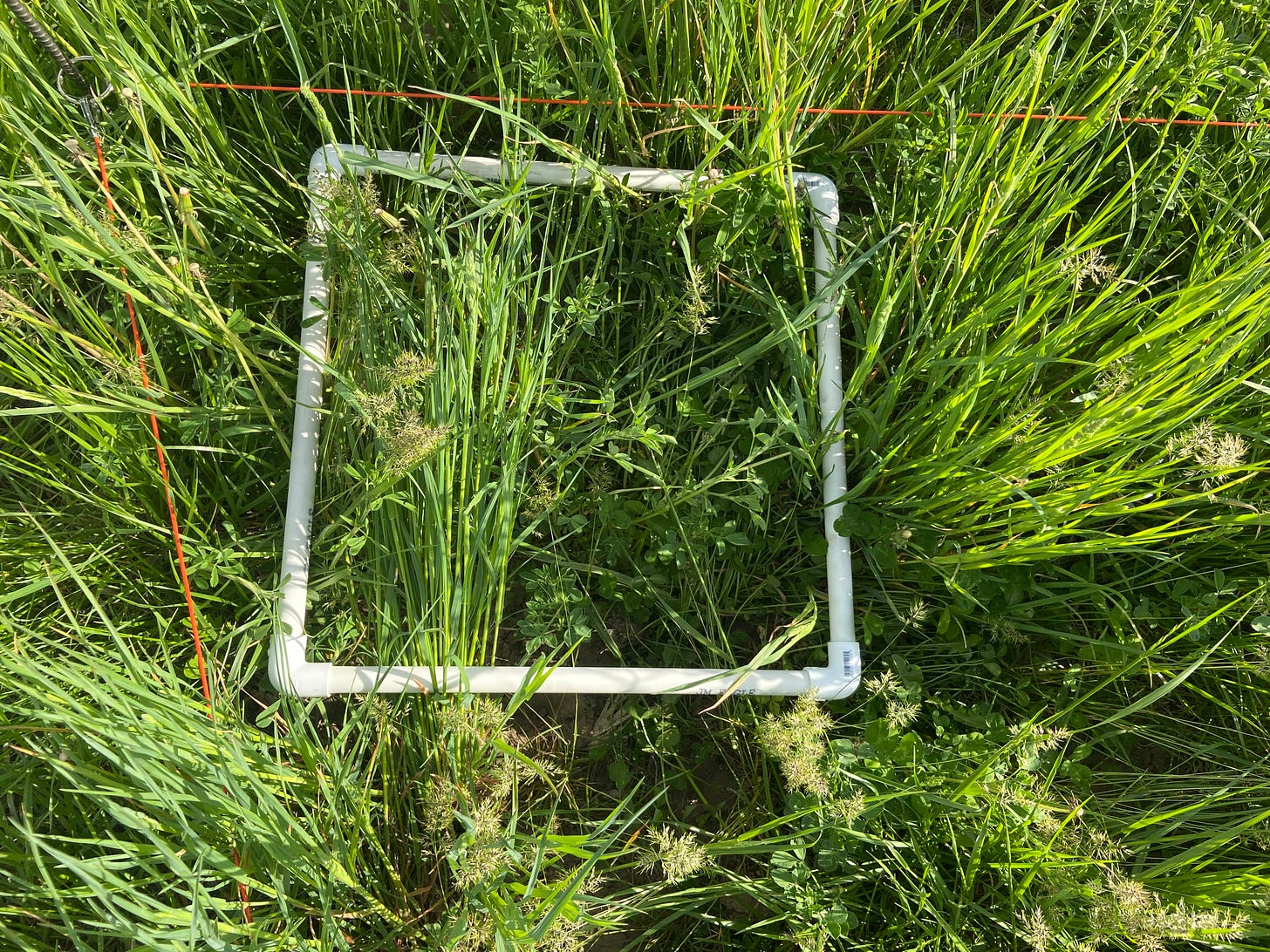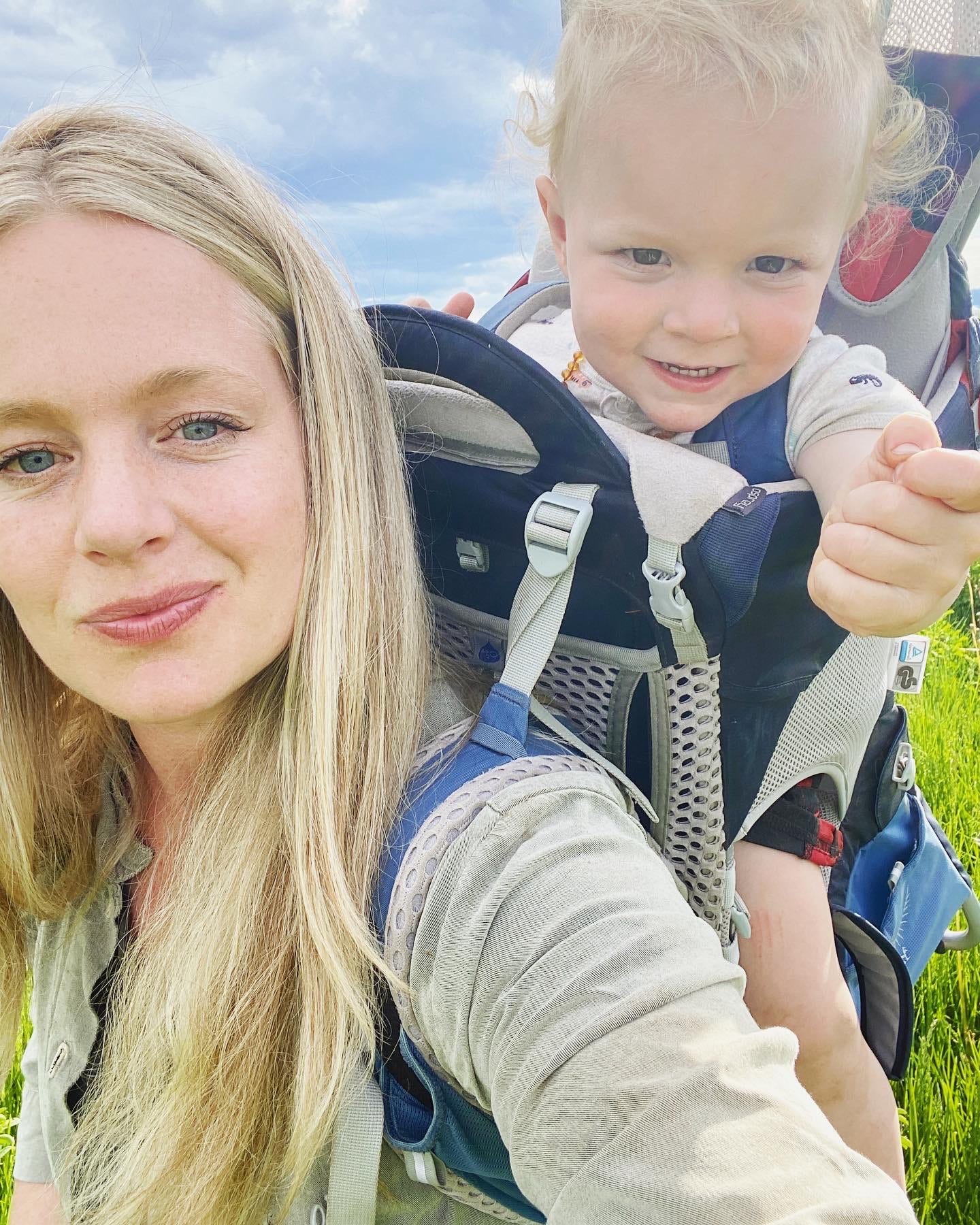How many people does it take to feed a farm?
We have to focus on this metric if we want regional, decentralized food systems.
I know our number. 150 people per month, that is how many people it takes to feed our farm. We are not there yet but I’m working like heck to get us there by the end of 2023.
In the Summer of 2021 our farm launched our Meat Box delivery program whereby we ship our regeneratively raised beef and pork direct to eaters doorsteps in ~10# insulated boxes. This meat is processed in a USDA facility and we can sell by-the-cut in smaller quantities and we can ship the frozen meats Nationwide, opened up a much larger base of customers.
This way of selling meat is different for us, as our farm has sold meat “on-the-hoof” as Meat Shares for a decade. Shares are a way of participating in the raising of your food much like a vegetable CSA. Customers commit to a Quarter, Half or Whole animal share at the beginning of the season typically and when harvest time comes they get to request specific cutting instructions if they desire, or take a standard “cut-and-wrap” which will include all the basics; steaks, ground meat, roasts, tenderloin, tri-tip, fat, bones, sausage, ham, bacon etc. The pricing for meat shares is always the best possible bulk pricing, at our farm it’s ~$8/# based on the hanging weight of the animals and it includes all the fees incurred for on-farm kill, process, cut-and-wrap. Customer and for Farmer, it allows both to have the best economic outcome, a win-win for planet and pockets. Shares are generally purchased by local people in the Oregon region, though some from out-of-state will secure shares and pickup their share from us here at the farm once a year. Shares allow us to harvest animals on the farm, and for us that is the best case scenario. There are many ways that Meat Shares are the best possible way to raise and sell meats, but there are many real barriers for people and we listened to what these barriers are and thus it’s why we now offer both ways to purchase meat from our farm, Meat Shares and Meat Boxes.
For many families, buying in bulk and having a chest freezer doesn’t seem feasible. Space is one of the largest concerns, next seems to be the uncertainty of how much meat a family will truly eat in a year and thus there is hesitancy to commit to a Share. For reference here are some of the approx. yields on Meat Shares:
Eighth Beef ~ 60-70# take home meat
Quarter Beef ~ 120-150#
Half Beef ~ 260-300#
Quarter Pork ~38-50# take home meat
Half Pork ~90#
Whole Pork ~180#
Our Meat Box program as been a wonderful solution for the families and individuals who wish to have a direct relationship with a regenerative & Organic farm/ranch and who prefer the variety that comes from having a box delivered to their doorstep each month. It’s also a great way to allow people to try our product first before committing to a Monthly Subscription or a Meat Share. Based on the customer feedback and the growth of our Subscribers, we know the taste and quality of our meats is rarely rivaled and many of our customers have been with us for a decade now. That’s the truest form of feedback there is!
What I want to talk about more and more is the concept I introduced at the beginning, how many people does it take to feed a farm.
In so many cultural narratives around regenerative agriculture vs commodity ag I see the focus on “Can this system feed the world? How many people can your farm feed? Is this scalable?" I think we are not asking the more important questions. Instead I would ask this, “Is this model replicable? Is this model resilient to climactic and socio-economic turmoil? How many people does it take to keep a farm like yours thriving?”
Regenerative agriculture is regenerative when it is decentralized and diversified and applied with geographic context, as such scaling beyond a certain limit is antithetical. I can tell you from our experience though it is scalable and replicatable to a size that can feed a large community and when done in concert with fellow growers in a region, I believe the growers of our region could feed our region IF OUR COMMUNITY COMMITS TO US.
This is where my mind is focus for our farm, and for our regional food distribution cooperative Agricultural Connection Cooperative
How do we develop programs, marketing, subscription models, shares, direct delivery boxes, CSAs, on-farm pick-up, Committed Clubs, etc etc that incentivize COMMITMENT?
During the pandemic, all of us experienced a huge surge of committed customers who gobbled up our meat and veggies CSAs. When the fragility of the food system was illuminated in a rare moment of transparency of what insecurities are inherent in a globalized food system, suddenly consumers eyes were opened and local food benefitted hugely. While this surge was fun, all of us asked ourselves these questions;
“Will they stay with us when the facade returns?”
Some did, some didn’t. In a system that requires us to plan years in advance, the lack of commitment to local food makes farming and ranching harder than it could be. In all honesty, prices could come down and efficiencies would go up with increased commitment. The risk and burden would be lightened for producers, and the security of food to families would increase with more honoring of the reciprocal relationship eater and grower have.
I think we are not asking the more important questions.
Instead I would ask this, “Is this model replicable? Is this model resilient to climactic and socio-economic turmoil?
How many people does it take to keep a farm like yours thriving?”
So rather than the standard framing, placing the responsibility and burden of providing on the shoulders of producers by asking “How many people can your farm feed?” I would like to steer a conversation this way instead, “ How many people does it take to feed a farm?”
Our farm needs 150 committed customers eating our meats each month for us to not just survive, but to thrive. I’m not chasing survival mode anymore, we’ve done that for a decade, now we are chasing our own health and holism and that means we are shooting for thriving just as we aim for this with the land we manage. We aren’t at our magic 150 number yet, but I’m working like heck to get us there.
For health an holism, for long-term resilience and food security, for our ability to regenerate soils and ecosystems, for our ability to plan for a future on stewarding a landscape for decade and hopefully generations, we need YOU to think of our relationship with reciprocity. We are honored to feed you, and we hope you feel a shared sense of honor of feeding us when you commit to us, your farmers. It feels really good when we enter into such relationships, especially around the thing that we consumer each day and makes us who we are. We are what we eat, it’s a process that is shaping our bodies and our minds every day, the food we consume.
I choose one of reciprocity with community and with land. I hope you do too.
In the name of reciprocity please enjoy a 20% discount on at Meat Box linked below.
This spring has been an incredible one for our farm. After the harsh drought of the past 4 years (more depending how you look at it) this spring the light and consistent precipitation has relieved our weary minds and grasses are growing faster than we can graze them. We are giving thanks every days that the weather treats us to this respite. But make no mistake, the lessons of the past 4 years are close to mind each day and we will continue to operate looking ahead at the long-game and treating our land with care so that when drought/ heat/ extremes come again as they always do, our land will have the fortitude in reserves to get us all through.
Much love from the windy quenched plains of Madras,
Cate
If you’d like to join our farm family, please enjoy this special 20% discount for readers of my Range Revolution Substack by using code RANGE20 at checkout for a Meat Box delivered to your doorstep. I encourage you to Subscribe and save 10% off every box!
If you live in the PNW and would like to learn more about our Meat Shares, please reach out or visit our website to learn more here.








I love this metric! I think every farm should know this number. We struggled to get there for our poultry farm too ... until we recruited other farmers (beef, pork, veggies, dairy) to join us and offer a "grocery box" rather than just a poultry box. I think we have to be creative and be willing to sell the way consumers have been conditioned to buy.
Truly hope this is a prosperous season for your farm!